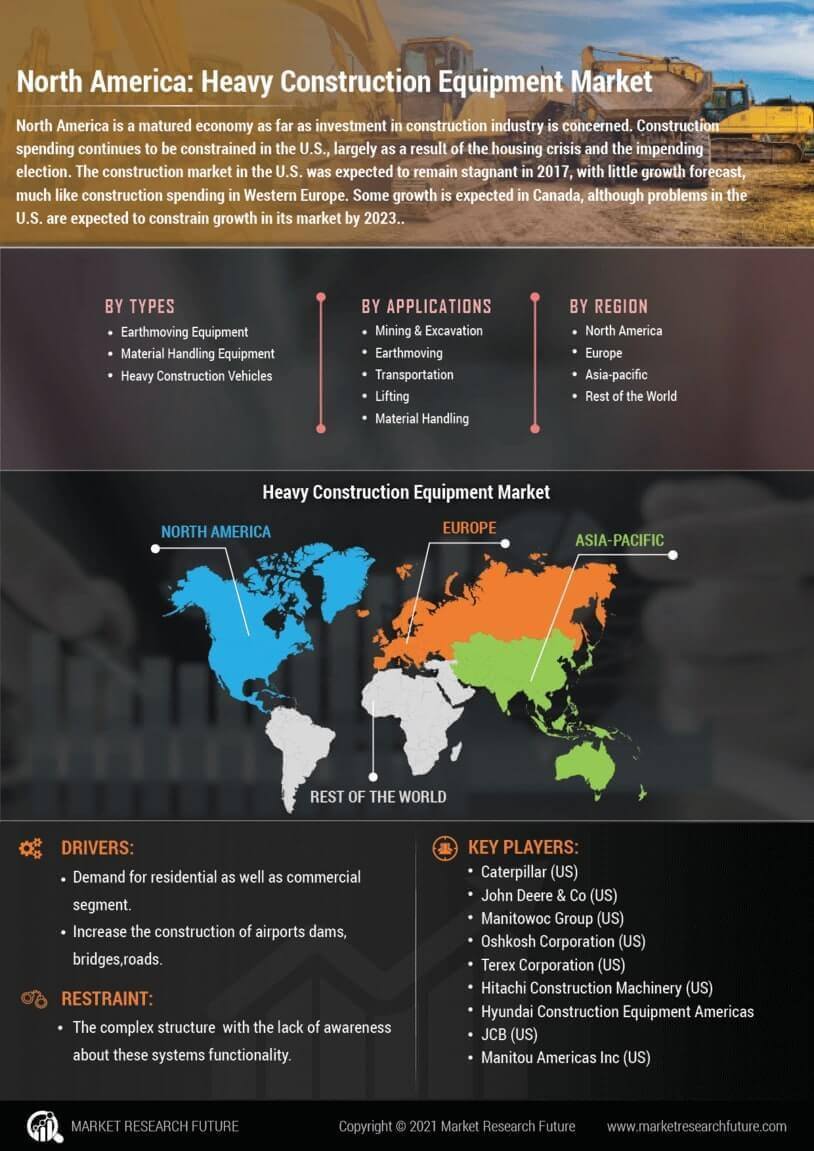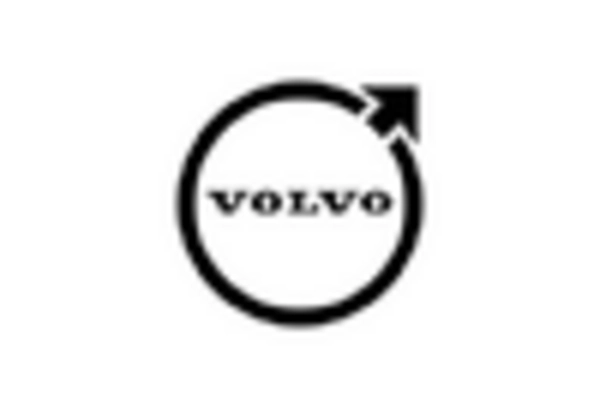Rising Urbanization
The heavy construction-equipment market in North America is experiencing a surge due to increasing urbanization. As cities expand, the demand for infrastructure development rises, necessitating the use of heavy machinery for construction projects. Urban areas are projected to grow, with estimates suggesting that by 2030, nearly 85% of the North American population will reside in urban settings. This trend drives the need for heavy construction equipment to support residential, commercial, and public infrastructure projects. The construction sector is expected to contribute approximately $1 trillion to the economy, further emphasizing the importance of heavy machinery in meeting these demands. Consequently, manufacturers are likely to focus on producing equipment that meets the specific needs of urban construction, thereby enhancing their market presence.
Environmental Regulations
The heavy construction-equipment market in North America is significantly influenced by stringent environmental regulations. Governments are implementing policies aimed at reducing emissions and promoting sustainable practices within the construction industry. For example, the Environmental Protection Agency (EPA) has established regulations that require construction equipment to meet specific emissions standards. This regulatory landscape is driving manufacturers to develop cleaner, more efficient machinery that complies with these standards. As a result, the market is witnessing a shift towards electric and hybrid equipment, which not only meets regulatory requirements but also appeals to environmentally conscious consumers. The potential for growth in this segment is substantial, as companies seek to align with sustainability goals.
Technological Integration
The integration of advanced technologies into the heavy construction-equipment market in North America is transforming operational efficiencies. Innovations such as telematics, automation, and artificial intelligence are increasingly being adopted by construction firms to enhance productivity and reduce operational costs. For instance, telematics systems allow for real-time monitoring of equipment performance, leading to improved maintenance schedules and reduced downtime. It is estimated that the adoption of these technologies could lead to a 20% increase in productivity within the sector. As construction companies seek to optimize their operations, the demand for technologically advanced heavy machinery is likely to rise, prompting manufacturers to invest in research and development to stay competitive.
Economic Recovery and Growth
The heavy construction-equipment market in North America is poised for growth as the economy continues to recover. Economic indicators suggest a positive trajectory, with GDP growth projected at 3% annually over the next few years. This economic recovery is likely to spur investments in construction projects across various sectors, including residential, commercial, and industrial. As businesses expand and new projects are initiated, the demand for heavy construction equipment is expected to rise. Additionally, low-interest rates and favorable financing options may encourage contractors to invest in new machinery, further driving market growth. The overall economic climate appears conducive to the expansion of the heavy construction-equipment market, presenting opportunities for manufacturers and suppliers.
Government Infrastructure Programs
Government initiatives aimed at enhancing infrastructure are pivotal for the heavy construction-equipment market in North America. Recent federal and state programs have allocated substantial funding for infrastructure projects, with the Biden administration proposing a $1.2 trillion infrastructure plan. This funding is expected to stimulate demand for heavy construction equipment as projects such as road repairs, bridge construction, and public transit upgrades commence. The heavy construction-equipment market is likely to benefit from these investments, as contractors will require advanced machinery to meet project specifications and timelines. Furthermore, the emphasis on modernizing aging infrastructure presents opportunities for equipment manufacturers to innovate and provide solutions that align with government objectives.


















Leave a Comment